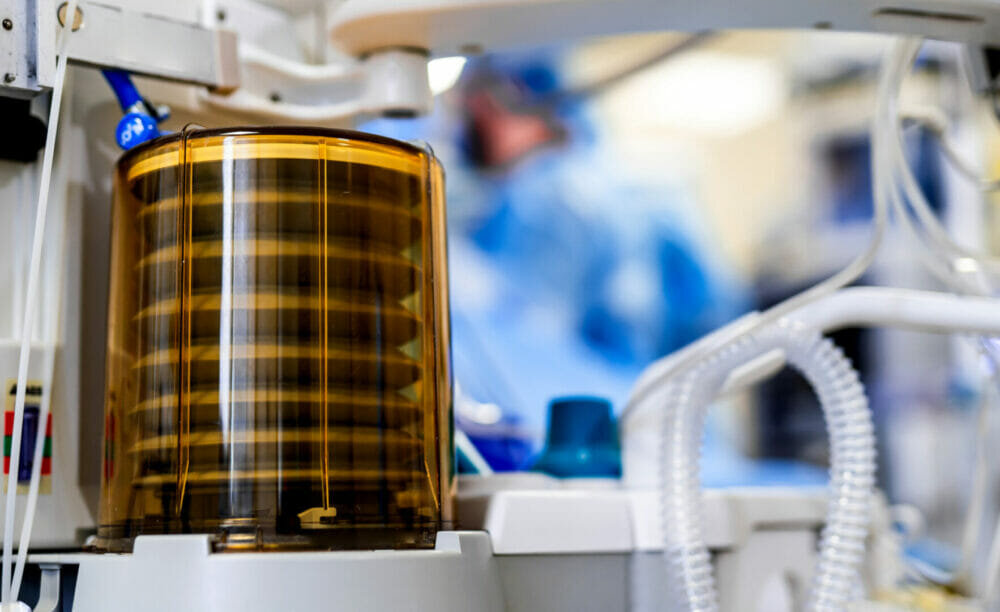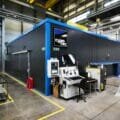~ Precision bearings crucial to ensuring long service life of medical devices ~
Precision bearings are among critical components in medical devices that are vital to ensuring patient safety. Yet, according to the 2022 Recall Index by Sedgewick, medical device recalls have reached a record number over the last three years, with safety issues being the top reason. Here, Chris Johnson, managing director at specialist bearing supplier SMB Bearings, explains why the correct choice of suitable ball and ring materials and the right product design can ensure high-precision bearings — and medical devices — have a long service life.
Precision bearings are used in a wide variety of medical devices including surgical power tools, ventilators and heart pumps — and patient safety depends on them all. Whatever the device, there is an onus on medical device original equipment manufacturers (OEMs) to ensure that the right type of bearings are chosen, and fit precisely into the application. This responsibility is exacerbated by the fact that the development and approval of medical products is often a protracted and costly process.
What’s more, medical devices must pass regular checks and tests for long lifecycles. That includes standards like ISO 14971, which defines the best risk reduction practices throughout a medical device’s entire lifecycle — from design and manufacturing to distribution and maintenance.
Let’s examine more closely the demands on the bearings themselves. It’s vital that OEMs make the right choice of ball and ring materials.
Stainless steel versus ceramics
Traditionally, the ring materials of bearings in medical instruments have been made from high purity metals such as martensitic stainless steel. For example, medical robots require high precision components to undertake keyhole surgery and centrifuges must spin at high speeds to separate substances that have different weights. Applications that require high precision or high speed capabilities are more suited to steel bearings. Martensitic stainless steel is ideal for surgical tools, for example, because of its ability to withstand the kinds of aggressive chemicals used in sterilisation processes.
However, in harsh environments, steel bearings can become susceptible to corrosion, so hard-wearing ceramic bearings are ultimately a better choice to extend the service life of the device. In these cases, ceramic bearings are preferred.
Equipment applications that are more suited to ceramic materials include Magnetic Resonance Imaging (MRI) scanners. Hospitals want to ensure their high-value machines run effectively, without the need for high maintenance parts. Because MRI scanners use a strong magnetic field to generate two- or three-dimensional images of any living subject, standard steel bearings cannot be used due to their magnetic properties. Instead, the application requires non-magnetic or non-conductive components, in this case, quality ceramic bearings.
Full ceramic bearings are harder than steel, with superior corrosion and heat resistance, higher dimensional stability and lower density. They are significantly more expensive than their steel counterparts — yet, overall, ceramic bearings are worth the extra investment to help ensure that high-value applications, like lab equipment, run with effectiveness and longevity. Indeed, using the wrong components in such equipment can cause contaminations or cease operations altogether.

As for the choice of ball material with the bearings, plastic ball bearings are a good option for MRI scanner beds — or, indeed, any lower precision application in medical environments where there cannot be any magnetic distortion. Plastic ball bearings are also completely nonmagnetic when fitted with polymer, glass or ceramic balls. The rings can also be made from different plastics, such as polyether ether keton (PEEK) or polytetrafluoroethylene (PTFE). Each has outstanding chemical resistant properties. PEEK materials, in particular, have improved corrosion and abrasion resistance, strength and toughness, X-ray radiolucency and excellent sterilisation performance.
Smallest possible bearings
Aside from materials, the high-precision bearing’s design should also be considered. Generally, medical device OEMs must develop their products to function well in a limited space. This equipment requires the smallest possible bearings to fit, particularly for handheld devices. For such applications, SMB Bearings recommends stainless steel miniature bearings, defined by the inner diameter being under 10 millimetres. However, the smallest bearing in SMB Bearings’ miniature range is designed to fit a shaft just 0.6 millimetres in diameter — roughly the size of a pin head.
For rotational handheld medical equipment, such as dental drills, bearings may need to work at high speeds. A bearing with a 0.6 millimetre bore can deliver 160,000 revolutions per minute (rpm), giving an impressive capacity for rotational speed, while some larger bearings can have their speed rating increased by the use of ball retainers, made from materials such as torlon or reinforced polyamide.
If rotational accuracy is important to the application — usually the case with medical instruments — manufacturers must consider choosing a precision branded bearing. There are plenty of low-cost bearings on the market, but their accuracy and inconsistent quality makes them dangerously unsuitable for high precision applications.
Good lubrication
Next, let’s look at bearing lubrication requirements in medical applications. Ceramic bearings do not require a lubricant to operate, whereas steel alternatives may need routine maintenance to relubricate the part. In these instances, good lubrication is also vital to bearing performance in medical applications, and to ensuring patient safety. For instance, for bearing systems that rely on grease lubrication it’s recommended that the lubrication is biocompatible, so there is no risk to the patient’s health even if the equipment comes into contact with skin or tissue.
Indeed, lubricants graded H1 or H2 by the National Sanitation Foundation (NSF) are typically recommended for medical devices. H1 lubricants are tasteless, odourless and classified as safe for human consumption. They are used in machinery like pumps, conveyor belts and mixers, and even food preparation environments where contact with the food is technically unavoidable. H2 lubricants are recommended for devices that don’t come in direct contact with food, beverages or pharmaceutical products.
Medical device OEMs should also consider biocompatible lubricants that meet ISO 10993, a series of standards for evaluating the biocompatibility of medical devices to manage biological risk.
The above examples show that precision bearings in medical devices are integral to ensuring patient safety. However, with the support of an expert specialist bearings supplier, OEMs needn’t feel the burden of stipulations like ISO 14971. Instead, they can make the right choice of bearing material and design to ensure medical devices remain operational and pass inspections — and, most importantly, help safeguard patients’ safety well into the future without the need for recalls.
For more information on how specialist precision bearings can support longer service life in medical devices, visits its website or email [email protected].








